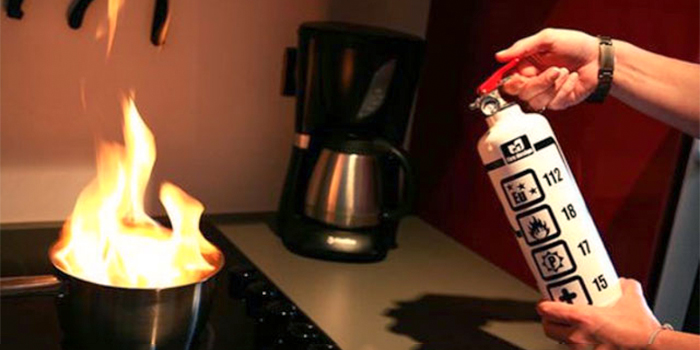
As dreadful as it is to think about the worst case scenario, it is unavoidable and must be prepared for. One of the scenarios one must think of is fire hazards at home and what can be done about it.
Here are some things you can do to prepare in case of fires at home:
Fire plan
- A rough plan of the house should be drawn with escape routes marked
- Each member of the family and household staff should know their options for escape and practice using them
- Adults should know where the fire extinguishers are and how to use them
- A safe area outside the house should be designated as a meeting area where everyone can assemble and be accounted for
In case of fire
- Raise the alarm
- Get out by the safest route closing doors behind you
- Do not stop to collect belongings
- Do not open hot doors/doors with hot handles
- If in smoke, stay as close as possible to the ground
- If clothing catches fire, STOP, DROP and ROLL
- Call emergency services
- Check that everyone is out
- Summon neighbours for help
- If safe to do so, tackle the fire using extinguishers or hoses keeping a safe
- exit behind you at all times
- Do not re-enter the building for any reason until a fire officer says it is safe
If you are trapped
- Remain calm – save your energy to help you survive.
- If you are trapped by flames or smoke, close the door nearest to the fire and use towels or sheets to block any gaps.
- If the room you are in fills with smoke, stay close to the floor.
- Open the window, use your whistle, horn or bell or just SHOUT LOUDLY to attract the attention of others who can call for help.
If you are in immediate danger and you need to leave via a first floor window, drop cushions, mattresses or bedding to the ground to break your fall. Get out feet first and lower yourself to the full length of your arms before dropping, pushing away from the building.
Safety in the kitchen
- Keep the lid of any pot or pan being used close at hand while cooking
- Keep a fire extinguisher and fire blanket close at hand
- Submerge hot pots and pans in cold water immediately after use
- Do not allow children to enter unsupervised
- While cooking, turn pot and pan handles inwards
- Use the rear burners when possible
- Never fill a pan more than one third with oil
- Do not put anything other than pots and pans on the cooker
- Never cook while wearing loose clothing
- Tie long hair back while cooking
- Never leave cooking unattended
- Keep electrical cords on the work surfaces, not hanging down
- Lift the back side of a pot lid first to allow steam to escape away from you
- Do not connect more than two appliances to the same electricity outlet
What to do in case of a kitchen fire
- If a pot or pan catches fire, switch off the heat if safe to do so, cover the pot with its own lid, a damp cloth or the fire blanket and leave alone until cool. DO NOT try to move it and DO NOT use a fire extinguisher
- Do not use water on cooker fires
- If the microwave catches fire, switch it off and DO NOT open the door
- Call for help
- Open the windows
- If clothing catches fire, STOP, DROP and ROLL
- Burned skin should be put under cold running water as soon as possible – DO NOT use butter or other similar substance
Fire extinguishers
Fire extinguishers are rated according to the type of fire that they are most suited to extinguish. These ratings are Class A, Class B and Class C. The definitions of each of these are as follows:
| Contains | Used for: | |
| A | Water Dry Chemical | Ordinary combustibles such as wood, paper, cloth, etc. |
| B | Carbon Dioxide Dry Chemical | Flammable liquids |
| C | Carbon Dioxide Dry Chemical | Electrical equipment or wiring |
- Certain types of extinguishers, notably those containing a dry chemical extinguishing medium, may be rated for use on more than one or all of classes of fires
- To use any fire extinguisher, regardless of type, pull out the safety pin, direct the hose or discharge nozzle at the base of the fire and squeeze the handle
- For household use, CO2 and halon extinguishers are recommended because of their versatility and clean operation. Water is easily accessible in most domestic situations should it be needed. Dry powder is effective but very messy and valves often stick open meaning that the entire contents can be discharged inside the house
- Only attack a fire with a fire extinguisher in the early stages while it is small. Operating time and effectiveness are insufficient to attack large fires. Keep a clear exit to open air at your back at all times
CO2 and halon extinguishers work by interfering with the chemical reaction necessary to create flames, they do not effectively cool the material that is alight. For this reason care should be taken that the fire does not spontaneously re-ignite. Always move burned materials outside after the fire is out, do not put them in the trash.




